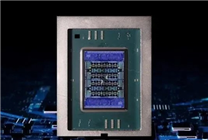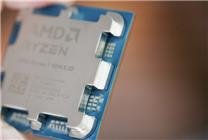Huawei Unveils the Game-Changing Kunpeng 930 Processor: A Leap into the Future of Computing
In 2019, Huawei made waves in the tech world with the launch of its first server processor, the Kunpeng 920. Built on the Arm instruction set architecture and a refined 7nm process, the Kunpeng 920 supported configurations with 32 to 64 cores, boasting a main frequency of up to 2.6GHz. It offered robust support for 8-channel DDR4 memory, PCIe 4.0, and 100G RoCE networks. Fast forward to now, and it appears that Huawei is ready to redefine server performance yet again with its new Kunpeng 930 processor.
Introduction to Kunpeng 930
Recent reports from tech enthusiasts have highlighted the features of the recently launched Kunpeng 930, which is notably equipped with an impressive 120 cores. This new addition to Huawei’s lineup is generating buzz for its advanced capabilities and has been showcased in several analyses across various platforms.

Significant Advancements in Chip Design
The Kunpeng 930 stands out due to its innovative chip packaging. With a package size of approximately 77.5mm x 58.0mm, it utilizes a Chiplet architecture, comprising four distinct chips. This design allows for higher computational capabilities while maintaining efficiency.
The overall chip package includes four computing chiplets totaling about 252.3 mm², complemented by a large I/O die measuring around 312.3 mm². This enhanced I/O die is roughly 81.26% larger than that of its predecessor, the Kunpeng 920, enabling connections through an impressive 96-channel memory interface.

Core Architecture and Performance
One of the most notable aspects of the Kunpeng 930 is its core architecture. Each CPU die in this processor features 40 cores, with a total of 120 cores across the entire chip. Each die is equipped with a 2MB L2 cache and shares a substantial 91MB L3 cache. The architecture leverages Huawei’s proprietary "Tarzan" core, showcasing its commitment to innovation within the Arm framework.
Enhanced I/O and Memory Capabilities
The I/O die of the Kunpeng 930 supports a groundbreaking 96 PCIe channels, facilitating faster data transfer rates and improved performance in multi-tasking environments. In addition, it supports 16 channels of DDR5 memory and adopts a dual-channel motherboard platform, which opens the door to dual CPU configurations—an ideal setup for high-performance computing tasks.

A Leap Forward in Computational Power
The Kunpeng 930’s introduction marks a significant generational leap. It nearly doubles the CPU core count compared to the Kunpeng 920, enhances cache configurations, and demonstrates the potential for improved SRAM density that can be attributed to advancements in the 5nm manufacturing process. These changes promise elevated performance levels for applications that demand robust processing capabilities.
Conclusion
Huawei’s Kunpeng 930 processor sets a new standard for server-grade processing power. With its impressive 120 cores, cutting-edge architecture, and advanced I/O capabilities, the Kunpeng 930 positions Huawei as a key player in the ever-evolving landscape of server technology. As organizations increasingly seek high-performance servers to meet their expansive computing needs, the Kunpeng 930 is poised to deliver exceptional results.
By establishing itself at the forefront of processor innovation, Huawei continues to redefine what is possible in high-performance computing and paves the way for future advancements in technology.
With the Kunpeng 930, enterprises can look forward to an era of unparalleled efficiency and power, making it an exciting time for server technology.









